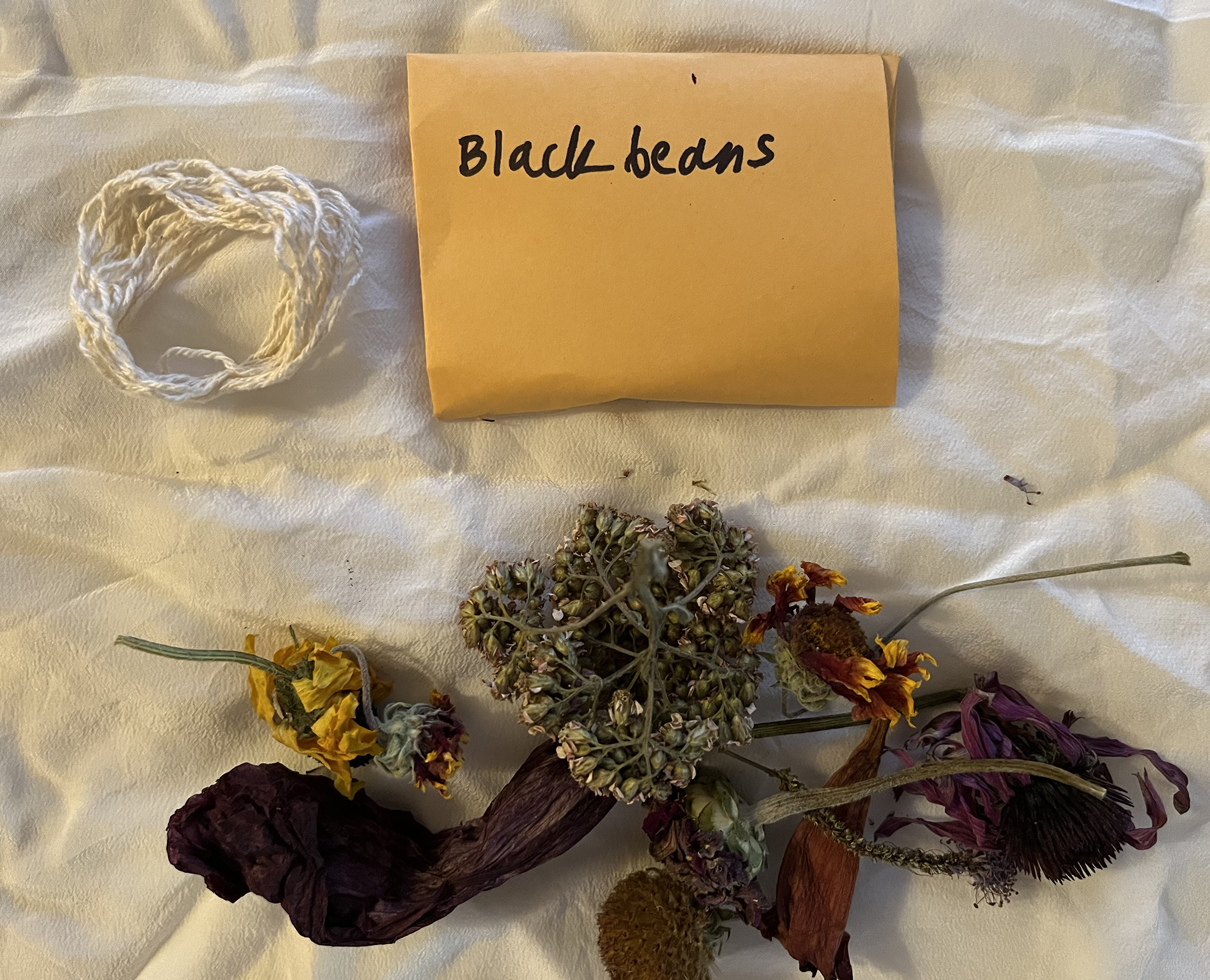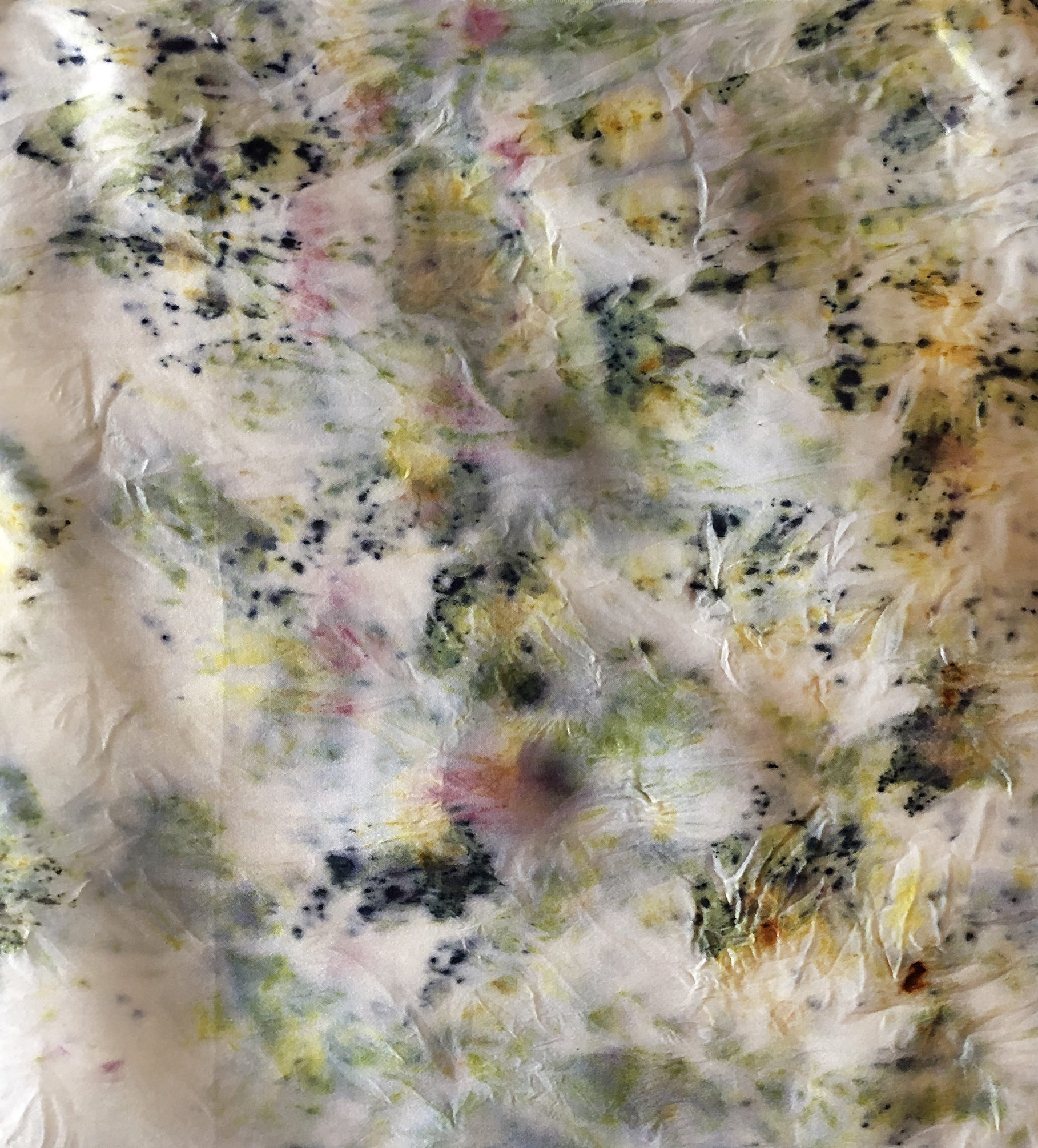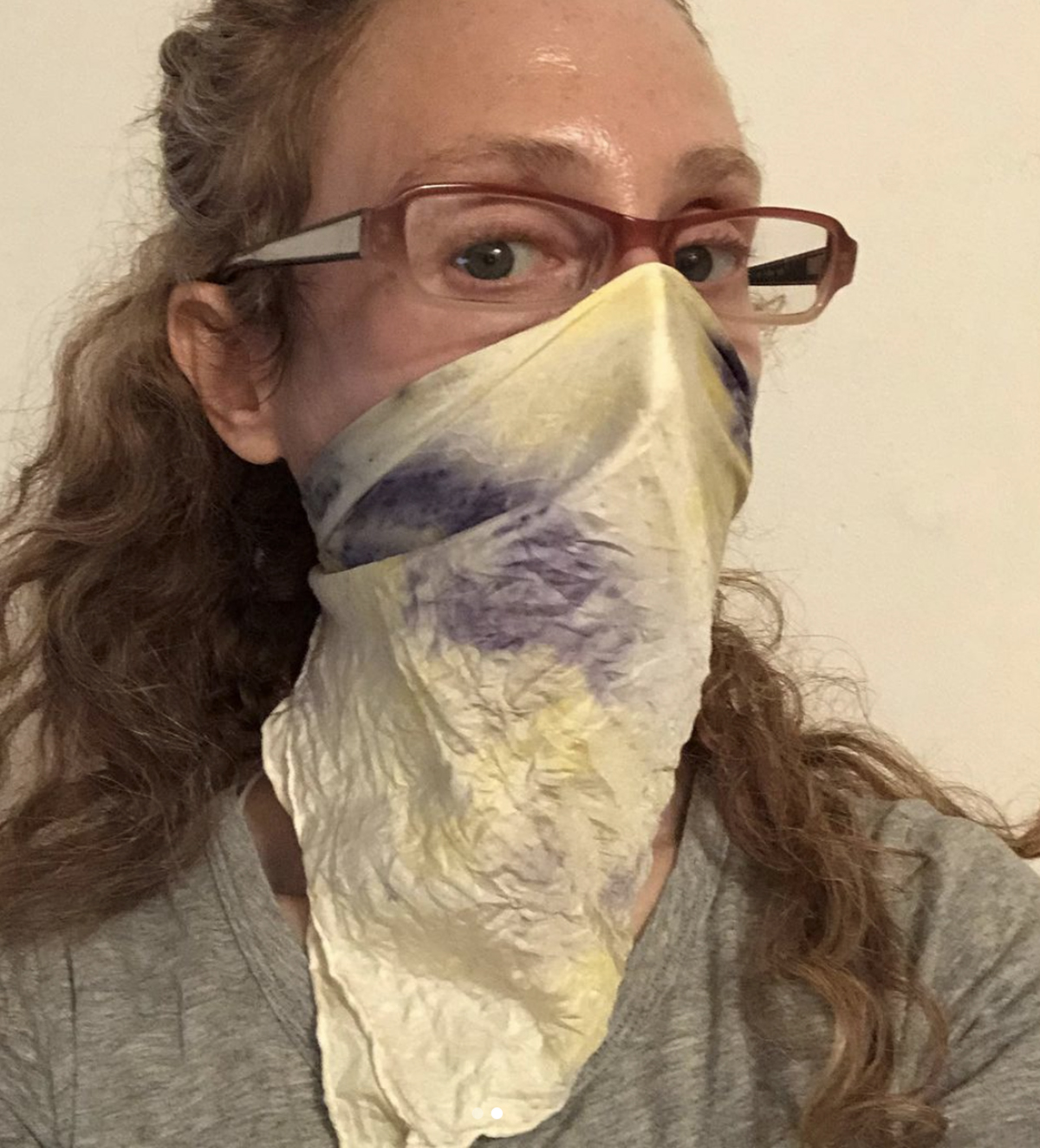Event Info
This fun & easy virtual workshop takes place virtually via Zoom on Wednesday, December 15 from 6–8pm ET.
About the Workshop:
In this virtual class for all experience levels with Instructor Iviva Olenick, students will learn how to use organic materials like fruits, vegetables, yard waste, leaves, and flowers to dye fabric in a variety of colors! Olenick will teach students the bundle dyeing technique, which combines color theory, printmaking, and fiber arts.
Class size is limited to ensure an optimal student-to-teacher ratio. Register now before the remaining spots fill up!
Required Materials*:
- Un-dyed natural fabric
(can be clothing: silk, cotton, linen, or wool work the best!) - A pot to use for dyeing
(an old pot that wont be used for cooking in the future) - Aluminum foil or a steamer
- String or rubber bands
(uncolored rubber bands, string, yarn, or thread work best) - Food scraps
(we recommend trying: avocado skin, red or yellow onion skin, turmeric root or powder, berries, coffee grinds, shredded or chopped purple cabbage, black beans, sliced beets, tea leaves, and more!) - Yard materials
(we recommend: tree leaves from oak, maple, purple leaf sand cherry, and eucalyptus; flower petals; pieces of tree bark; acorns; wild grasses; and more!)
Optional Preparation of Fabric*:
- Gently simmer fabric in water with either soda wash or soda ash to remove any chemicals. this will make your dyes brighter and last longer! (Soda wash is also a fixative, so if you use this, skip step 2!)
- If you skipped step 1 or used soda ash, you can dissolve a small amount of alum – pickling salt – into gently boiling water. Lower the water to a simmer, and add your fabric, letting it soak for 1 hour. Be gentle with silk and wool fabrics! It might be best to just let them sit in warm water without simmering, especially wool, which can felt easily.
About the Instructor
Iviva Olenick is a Brooklyn-based artist developing textiles from seed to fiber and dye and using textiles as texts.
Her work has been exhibited all over the United States, including the Philadelphia Museum of Art; Museum of Design Atlanta; the Hunterdon Museum, NJ; Sugar Hill Children’s Museum of Art & Storytelling, NYC; the Center for Book Arts, NYC; the Old Stone House, Brooklyn; Wyckoff House Museum, Brooklyn.
Olenick is a faculty member of SVA’s MFA Art Practice program where she teaches Fibers. In addition, she gives artist talks and designs intensive textile-based workshops for museums and universities.
All images courtesy of the instructor.
Class size is limited to ensure an optimal student-to-teacher ratio. Register now before the remaining spots fill up!



